Existing masonry structures remain among the most vulnerable structures to seismic action as well as being the most common construction type worldwide. Yet structural analysis methods for masonry structures are not common and are often based on approaches derived from frame structures. Often in seismic regions masonry structures are written off and demolished to be replaced with RC structures, with serious financial, environmental and social consequences, affecting the sustainability of communities. The FaMIVE procedure is an analytical approach that allows to identify masonry structures out-of–plane and in-plane failure modes and the level of seismic action that will cause their collapse. The webinar, organised over two days will present the theoretical assumption behind the procedure, explain how it works, introduce a new shell that facilitate the preparation of the input data and give the attendees the opportunity to use the tool online. The webinar will also show three recent applications of FaMIVE to urban scale and territorial scale case studies, in Valencia, Spain, Santiago, Chile and Campania region, Italy, developed in collaboration with Politecnico de Valencia, Pontificia Universidad Catolica de Chile and Universita di Napoli Federico II. These studies have used FaMIVE to analyse large numbers of buildings and derive the seismic risk at territorial scale, by using a performance-based approach. Schedule:- Day 1
The FaMIVE Platform: a tool to conduct Performance Based Seismic Risk Assessment of historic buildings in urban centresDina D’Ayala, Arianna Guardiola VilloraPart a: How does it work
Part b: How you can use it
Abstract: Most historic urban centres in many parts of the globe are built with unreinforced masonry, be it made of brickwork, stone work or adobe. Innumerable modest to strong earthquakes in the past 100 years have shown the vulnerability of such buildings and what a calamity they can represent for their occupants. Yet, modern earthquake engineering has provided relatively little attention until recently to the development of efficient and reliable procedures that recognise the peculiarities of the behaviour of masonry structures and properly determine their response to earthquakes. The FaMIVE platform addresses this issue by providing a tool which is of general applicability, modest computational burden and adaptable to specific buildings configurations. This is an essential first step to then determine strengthening and retrofitting which allow us to deliver this heritage to posterity, fulfilling many of the SDGs and Net Zero agenda, by doing so.
These two presentations will:
- first introduce the limit state analysis and mechanical back ground to the procedure, showing how to identify and compute different mechanisms, triggered by different construction details.
- then present and illustrate a new data collection shell, available online, which will deliver the data directly to the platform and allow end user to request to run the analysis and obtain the results. The data collection is an important stage of the assessment process as in these buildings the architecture deeply affects the structural response and therefore the computation of the structural capacity.
A set of examples will be provided and attendees will be able to have hand on experience of the shell and the process of obtaining and interpreting results.
- Day 2
Seismic risk assessment for urban heritage: Pla del Remei area in Valencia (Spain)Arianna Guardiola VilloraAbstract: The Pla del Remei neighbourhood was developed at the end of the 19th century and is where most of the Valencian-Modernists heritage is located. The building stock is fairly homogeneous due to the quite rigid urban planning regulations at that time, enabling to identify a reduced sample representative of the buildings in the area.
These reduce sample was analysed by using a limit state approach coded in the FaMIVE method to produce Capacity Curves to identify a discrete number of typologies representative of the entire building stock of the area. Fragility functions have been derived for each of the identified typologies following N2 modified method.
Because these identified typologies can be found in other areas of urban expansion built at the same time following the new urban regulation regarding natural light and ventilation and with the same structural materials and techniques in many cities in Europe, the derived capacity curves and fragility functions can be used to conduct risk analysis of other historic urban centres.
Probabilistic fibre-based macro-element analysis for global seismic response and fragility assessment of historic masonry buildings
Fulvio ParisiAbstract: The talk deals with seismic performance assessment of historic masonry buildings, accounting for their global response associated with the in-plane nonlinear behaviour and failure of walls and floor systems. Special emphasis is given to (i) equivalent frame modelling with fibre-based macro-elements and (ii) effects of uncertainties in earthquake ground motion and both material and geometric properties. Based on the definition of multiple performance levels corresponding to increasing levels of seismic damage, analytical fragility curves of archetype structures representative of both low-rise and mid-rise buildings are presented for regional seismic risk assessment.
Integral in-plane/out-of-plane fragility curves of historic masonry buildings and implications on regional seismic risk assessment
Valentina BuonocuntoAbstract: The talk deals with the integration of equivalent frame analysis with FaMIVE analysis, using nonlinear static procedures for mechanics-based probabilistic simulation of historical masonry buildings. Novel analytical fragility curves corresponding to out-of-plane (OOP) failure modes are presented and compared to those associated with in-plane (IP) failure modes. Combined IP-OOP fragility curves are thus derived and their impact on both fatality risk and economic losses is evaluated at regional scale. A New Procedure to Derive Typological Fragility Curves for Unreinforced Masonry Structures: An Application to a Chilean CaseChiara Nuria Palazzi, Juan Pablo Munoz, Juan Carlos De la LleraAbstract: In this research, we compute the analytical seismic fragility of 423 Unreinforced Masonry (URM) buildings within 21 urban aggregates in the historic neighbourhood of Yungay in Santiago, Chile. The well-known Failure Mechanism Identification and Vulnerability Evaluation method (FaMive), a mechanical approach based on limit-state analysis and failure modes was used to compute collapse load factors and derive capacity curves for each structure. This research also introduces a new selection algorithm to automatically classify the capacity curves that uses an optimal logic tree analysis (LTA). The algorithm automatically clusters the capacity curves into different classes of historical buildings, using the observable properties of the facades as the decision variables of the LTA, while minimizing the variability of the capacity curves. The median capacity curve of each cluster is then used to derive Analytical Fragility Functions (AFFs), using a capacity-demand approach, that may be later used for seismic risk assessment. The structure of the LTA is observed to be adequately preserved for fragility functions. The aim of this work is to provide the data to prioritize mitigation strategies that enables us to preserve this particular heritage, as well as that of other similar historical urban areas in Chile and Latin American cities, which bear a strong architectural resemblance since their foundation.
Speakers:Dina D'AyalaUniversity College London - UNESCO Chair in Disaster Risk Reduction and Resilience Engineering Dina D’Ayala is the UNESCO Chair in Disaster Risk Reduction and Resilience Engineering @ UCL. She is Professor of Structural Engineering within the Department of Civil, Environmental and Geomatic Engineering. She is Co-Director of the UCL EPICentre and Co-Director of the StrEnTHE, the Structural and Environmental Laboratory @UCL HERE EAST. She is a director of the International Association of Earthquake Engineers and Fellow of the ICE. Her specialism is Structural Resilience Engineering with particular emphasis on the assessment, strengthening, preservation and resilience of existing buildings, structures, transport infrastructure and architectural heritage. She has developed FaMIVE for the past 20 years. Arianna GuardiolaUniversitat Politècnica de València (Spain) Arianna Guardiola Víllora is a Dr. Architect, Professor at the Department of Continuum Mechanics and Theory of Structures at the School of Architecture at the Universitat Politècnica de València (Spain). Her research is focused on improving the performance of the built structures in order to preserve them to posterity. Considering that the most sustainable structure is that which is already built, she is a firm defender of the rehabilitation and enhancement of the built heritage structures guaranteeing the authenticity and sustainability as opposed to demolition and new construction. Nowadays, her main lines of research are the analysis of the seismic vulnerability of residential buildings, and the energy efficiency of structures and built heritage. Fulvio ParisiUniversity of Naples Federico II, Italy Dr. Fulvio Parisi is Associate Professor of Structural Engineering and Coordinator of MSc Programme in Forensic Engineering at the University of Naples Federico II, Italy. His research activity encompasses performance, risk and robustness assessment of both masonry and concrete structures, as well as their structural rehabilitation with classical and innovative materials. He carried out both theoretical and experimental studies in about 30 research projects, coordinating major activities on buildings, bridges, and cultural heritage constructions. He authored over 200 papers in peer-reviewed international journals and conference proceedings, 1 book, 12 book chapters, 35 scientific reports, 2 software packages for structural analysis of masonry buildings, and 3 databases for experimental data selection on masonry properties. He edited 2 books and 6 special issues of peer-reviewed international journals. He is Editor of Construction and Building Materials (Elsevier), Associate Editor of the Journal of Performance of Constructed Facilities (ASCE) and Innovative Infrastructure Solutions (Springer), and Editorial Board Member of several international journals. His research findings were implemented in several national and international guidelines for structural design, assessment, retrofitting, and robustness. Prof. Parisi is convenor or member of working groups and technical committees in several associations and standard bodies, including the Comité Européen de Normalisation (CEN), Fédération Internationale du Béton (fib), and National Research Council of Italy (CNR). In 2020, he was included in the list of World’s Top 2% Scientists according to the scientific impact of his research activity. Since 2021, he is included in the list of World’s Top Scientists for both career-long and single-year impacts. Valentina BuonocuntoUniversity of Naples Federico II, Italy Miss Valentina Buonocunto received her MSc degree in Structural and Geotechnical Engineering at the University of Naples Federico II, Italy, where she is PhD student in Structural & Geotechnical Engineering and Seismic Risk under supervision of Prof. Fulvio Parisi and Prof. Giorgio Serino. In 2023, she was a visiting PhD student at University College London under supervision of Prof. Dina D’Ayala. Her research activity mainly focuses on nonlinear seismic analysis and vulnerability assessment of unreinforced masonry buildings using different computational strategies (finite element method, equivalent frame method, and rigid-body kinematic analysis) and probabilistic simulation. She was involved in DPC-ReLUIS 2022-2024 national project, assessing the nonlinear behaviour of irregular masonry walls with openings, displacement capacity of single walls, as well as seismic fragility and vulnerability of masonry buildings. In the framework of FAIL-SAFE national project (PI: Prof. Fulvio Parisi), her research activity is mainly focused on the investigation of residual load-bearing capacity and vulnerability of existing masonry buildings subjected to local damage. Juan Carlos de la LleraUniversidad Pontifica Católica de Chile Juan Carlos de la Llera was the dean of Engineering at Pontifical Catholic University of Chile (PUC) from 2010-2022. He is a PUC Civil Engineer (’85) and obtained his Ph.D. at UC Berkeley (’94). His research covers the fields of seismic protection of structures, seismic risk analysis of complex systems, and nonlinear structural dynamics. Currently, he is one of the PIs of CIGIDEN, and president of the Public Technological Resilience Institute, Itrend. He has numerous publications and patents in the field, commanded the creation of a national strategy for Disaster Resilience, and was part of the National Innovation Council for 12 years. He participated in the creation of a new Ministry of Science and Technology. Besides his academic awards, he obtained the 2011 Endeavor Entrepreneur Award for the performance of his seismic protection technology during the 2010, Chile earthquake, the National Innovation Trajectory Award in 2017, and was elected as an international member of the National Academy of Engineering of the USA. Professionally, he has led the development and use of seismic protection technologies in Chile and South America in more than 100 large structures. Nuria Chiara PalazziResearch Center for Integrated Disaster Risk Management (CIGIDEN) PhD in Architecture –Structures and Conservation of Architecture and Cultural Heritage from the University of Firenze, Italy– and PhD in Engineering Science from the Pontifical Catholic University of Chile. She is currently associate professor and research coordinator at the Andrés Bello University - Faculty of Architecture, and researcher at the Research Center for Integrated Disaster Risk Management (CIGIDEN). Nuria Chiara Palazzi's research domains include the assessment of seismic vulnerability and fragility of historic centres and existing structures. Juan Pablo MuñozResearch Center for Integrated Disaster Risk Management (CIGIDEN) Structural engineer and MSc of the Pontifical Catholic University of Chile. He works full time as a researcher at the Research Center for Integrated Disaster Risk Management (CIGIDEN) in Chile. His research focuses on seismic risk and resilience of critical lifelines, such as drinking water, urban transportation, electric power distribution, and emergency healthcare networks. Additionally, he collaborates in several other projects, including seismic fragility assessment of historic structures, and studies of seismic hazard in Chile. |
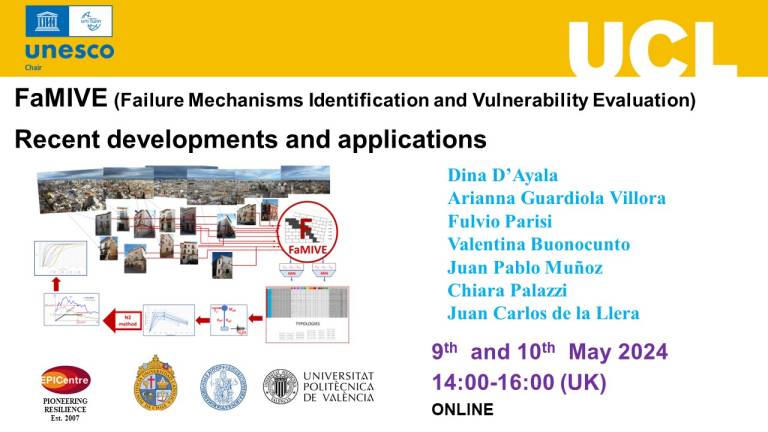
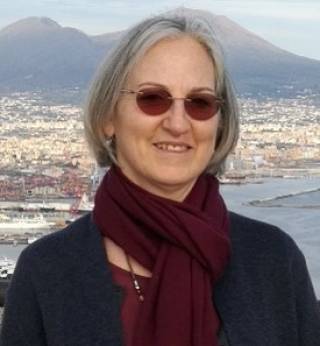
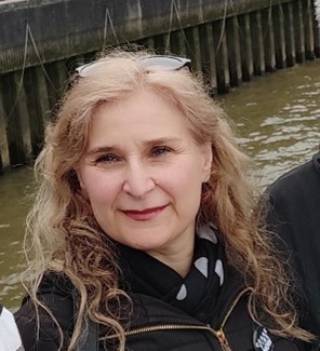



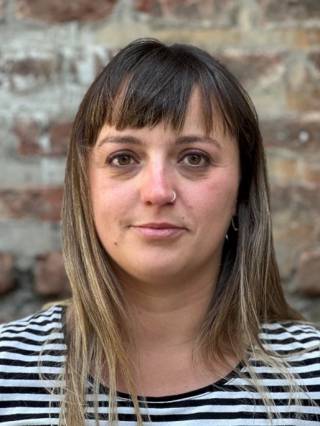
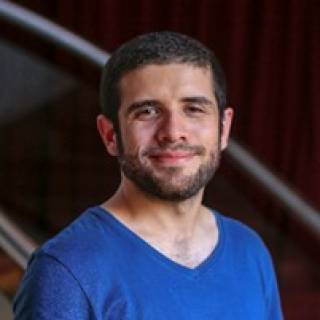
 Close
Close

